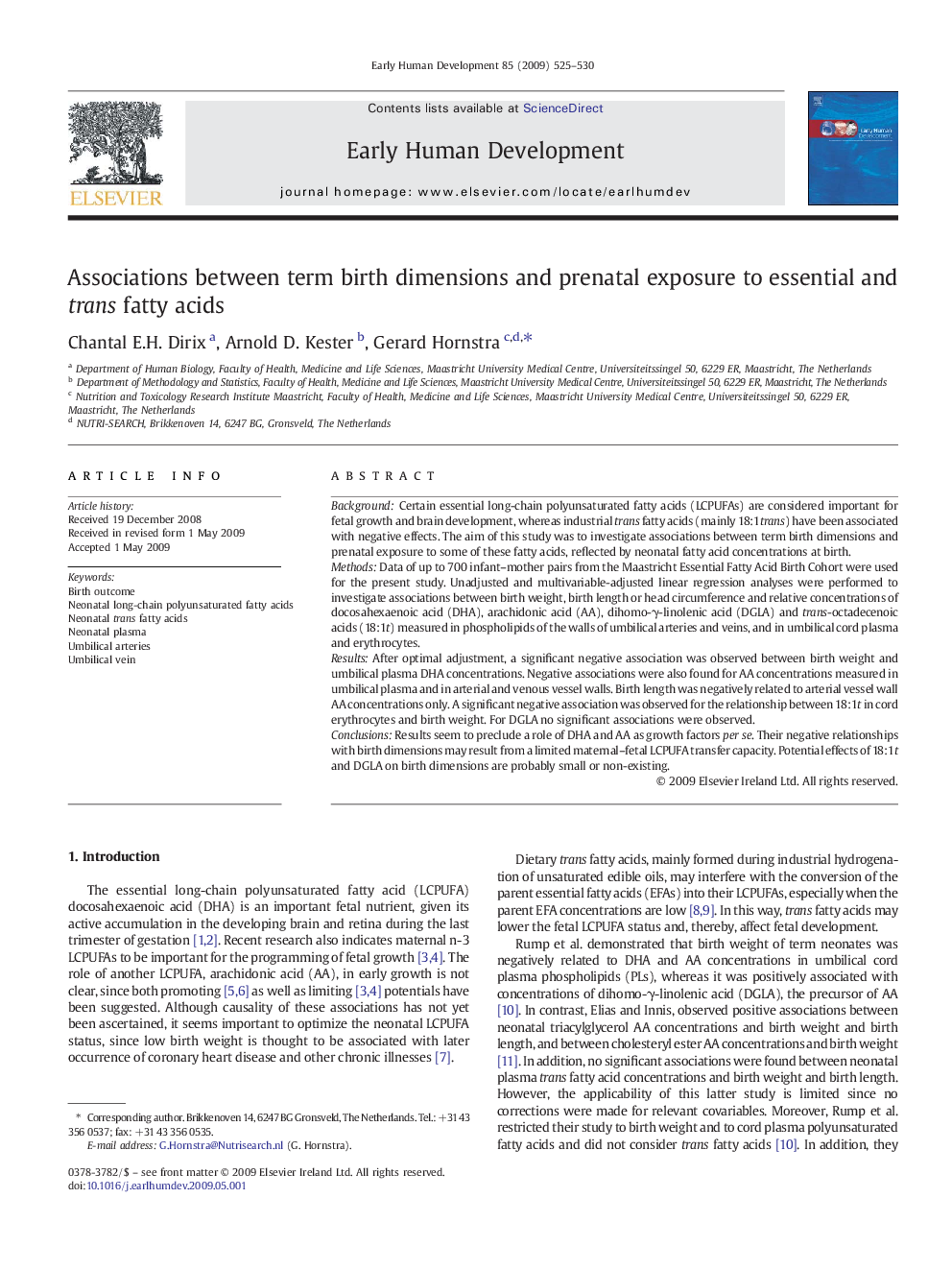| Article ID | Journal | Published Year | Pages | File Type |
|---|---|---|---|---|
| 3918557 | Early Human Development | 2009 | 6 Pages |
BackgroundCertain essential long-chain polyunsaturated fatty acids (LCPUFAs) are considered important for fetal growth and brain development, whereas industrial trans fatty acids (mainly 18:1trans) have been associated with negative effects. The aim of this study was to investigate associations between term birth dimensions and prenatal exposure to some of these fatty acids, reflected by neonatal fatty acid concentrations at birth.MethodsData of up to 700 infant–mother pairs from the Maastricht Essential Fatty Acid Birth Cohort were used for the present study. Unadjusted and multivariable-adjusted linear regression analyses were performed to investigate associations between birth weight, birth length or head circumference and relative concentrations of docosahexaenoic acid (DHA), arachidonic acid (AA), dihomo-γ-linolenic acid (DGLA) and trans-octadecenoic acids (18:1t) measured in phospholipids of the walls of umbilical arteries and veins, and in umbilical cord plasma and erythrocytes.ResultsAfter optimal adjustment, a significant negative association was observed between birth weight and umbilical plasma DHA concentrations. Negative associations were also found for AA concentrations measured in umbilical plasma and in arterial and venous vessel walls. Birth length was negatively related to arterial vessel wall AA concentrations only. A significant negative association was observed for the relationship between 18:1t in cord erythrocytes and birth weight. For DGLA no significant associations were observed.ConclusionsResults seem to preclude a role of DHA and AA as growth factors per se. Their negative relationships with birth dimensions may result from a limited maternal–fetal LCPUFA transfer capacity. Potential effects of 18:1t and DGLA on birth dimensions are probably small or non-existing.
